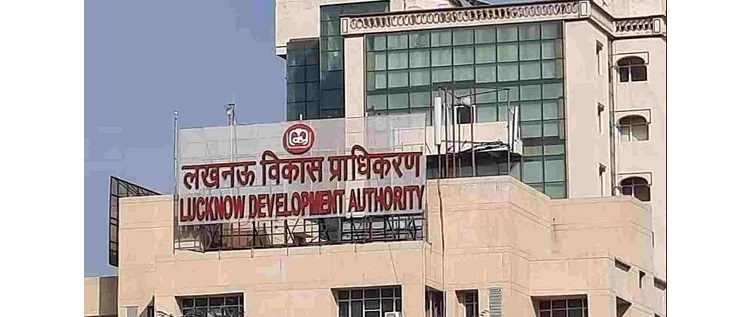E - PAPER
PE inflows into Indian real estate have surpassed USD53 billion
Colliers’ maiden India Investor Survey indicates that investors are confident about India’s robust commercial office market in 2019, even though the residential sector may see a slowdown. As per Colliers research, the inflows into Indian real estate have surpassed USD53 billion (INR32,000crore) sinc
 BY
admin
BY
admin
Published - Thursday, 04 Apr, 2019

Colliers’ maiden India Investor Survey indicates that investors are confident about India’s robust commercial office market in 2019, even though the residential sector may see a slowdown. As per Colliers research, the inflows into Indian real estate have surpassed USD53 billion (INR32,000crore) since 2008, with 59% of that total invested in 2014-Q1 2019. After 2014, a slew of reforms including enforcement of the Real Estate Regulatory Authority, introduction of the Goods and Services Tax and the Insolvency and Bankruptcy Code, and a relaxation of foreign direct investment norms, have steered investors’ interest towards Indian real estate.
“Investor-friendly reforms, positive sentiment following India’s first Real Estate Investment Trust (REIT) offering last month, and firm market fundamentals will continue to steer investments into commercial property assets. Investment in residential assets may be hampered due to the upcoming general elections and an ongoing crisis in the Non-Banking Financial Company (NBFC) industry”, says Joe Verghese, Managing Director at Colliers International India.
About 63% of the investors interviewed opted for office assets as their top investment preference. From 2014 to 2018, institutional investors invested in excess of USD10 billion (INR7,000crore) in office assets. This is driven in part by strong commercial office leasing, which touched a new peak in 2018 at 50.2 million sq ft. Investors are scouting for investment-ready assets in core office locations in Mumbai, Delhi-NCR, Bengaluru and Hyderabad, which together accounted for about 77% of the total leasing in 2018. We foresee higher investor interest for Greenfield projects in southern cities, especially Bengaluru and Hyderabad, which are witnessing pent-up demand in key office corridors.
Investors continue to view the residential segment favorably, buoyed by its low gestation period, as well as opportunity in affordable housing. However, we do foresee slowing of investments into residential sector, largely due to the ongoing NBFC crisis in the country, and the upcoming general elections.
Delhi-NCR featured as the top destination for assets in the industrial and logistics space, with 36% of the investors mentioning it as one of their preferred sectors. Investors cited Mumbai as the next preferred destination in this sector. More than half (54%) of respondents expect returns of higher than 10% from assets in this segment. While past investments in this space have been modest, USD1.2 billion (INR776 crore), there has been significant interest since last year by investors, aided by the rapid growth of e-commerce in the country.
Investors’ sentiment towards Bengaluru has undergone a perceptible shift with the Silicon Valley of India emerging as the first preference for investment over the next 12 months. This is a departure from the past, when Mumbai and Delhi-NCR witnessed a high volume of investment. Traditionally, Mumbai has received the highest inflows, accounting for 31% of total investments between 2008 and Q1 2019. Delhi-NCR garnered the second-largest share at 21% of total inflows in the same period. Bengaluru accounted for only about 14% of the total investments made in commercial office assets between 2008-Q1 2019, as investors preferred residential assets in Bengaluru due to their lower gestation period. However, we expect investors’ interest to be piqued by office assets. This is led by occupier demand of 14 million sqft in 2019, with an estimate of 4.5% increase in average rentals compounded annually over 2018-2021.
Investors placed Pune at a high position among emerging locations, with most of them citing a preference for investing in commercial assets. The city witnessed leasing of about 6.7 million sqft in 2018, and we forecast similar leasing levels to continue through 2021, helped by healthy pre-commitments in IT-SEZs. We estimate about 14.3 million sqft of Grade A supply during 2019 to 2021.
Hyderabad emerged as the second target for investments among emerging markets. We foresee increased investor interest in Hyderabad’s key secondary business district, which has huge pent-up demand.
Among the newer avenues for investment, about 63% of the respondents preferred data centers as their first choice. With some states like Maharashtra putting in place a Cloud Policy, we advise occupiers to scout for data center opportunities in Pune and Navi Mumbai, apart from IT centers like Bengaluru and Hyderabad.
Being a recession-resistant industry, student housing is emerging as an attractive option. With returns that can hover around 10%, we urge developers to expand in this fragmented space, making it more organized, thereby making it easier for investors to enter.
In the coming year, around 63% of the investors said they are likely to invest up to 20% of their investments in distressed assets. While distressed assets are a good opportunity for investors to acquire assets below cost, it is often fraught with legal challenges in India, and therefore, can be a risky proposition.
“The realty sector is likely to witness greater interest for distressed assets as investors allocate funds specifically for such assets. Among established asset classes, the positive momentum in India’s commercial office market is likely to steer institutional investors’ appetite for office assets– which emerged as the most preferred asset class”, says MeghaMaan, Senior Associate Director, Research at Colliers International India.
RELATED STORY VIEW MORE
NEWS LETTER
Subscribe for our news letter
E - PAPER
-

CURRENT MONTH 
LAST MONTH















